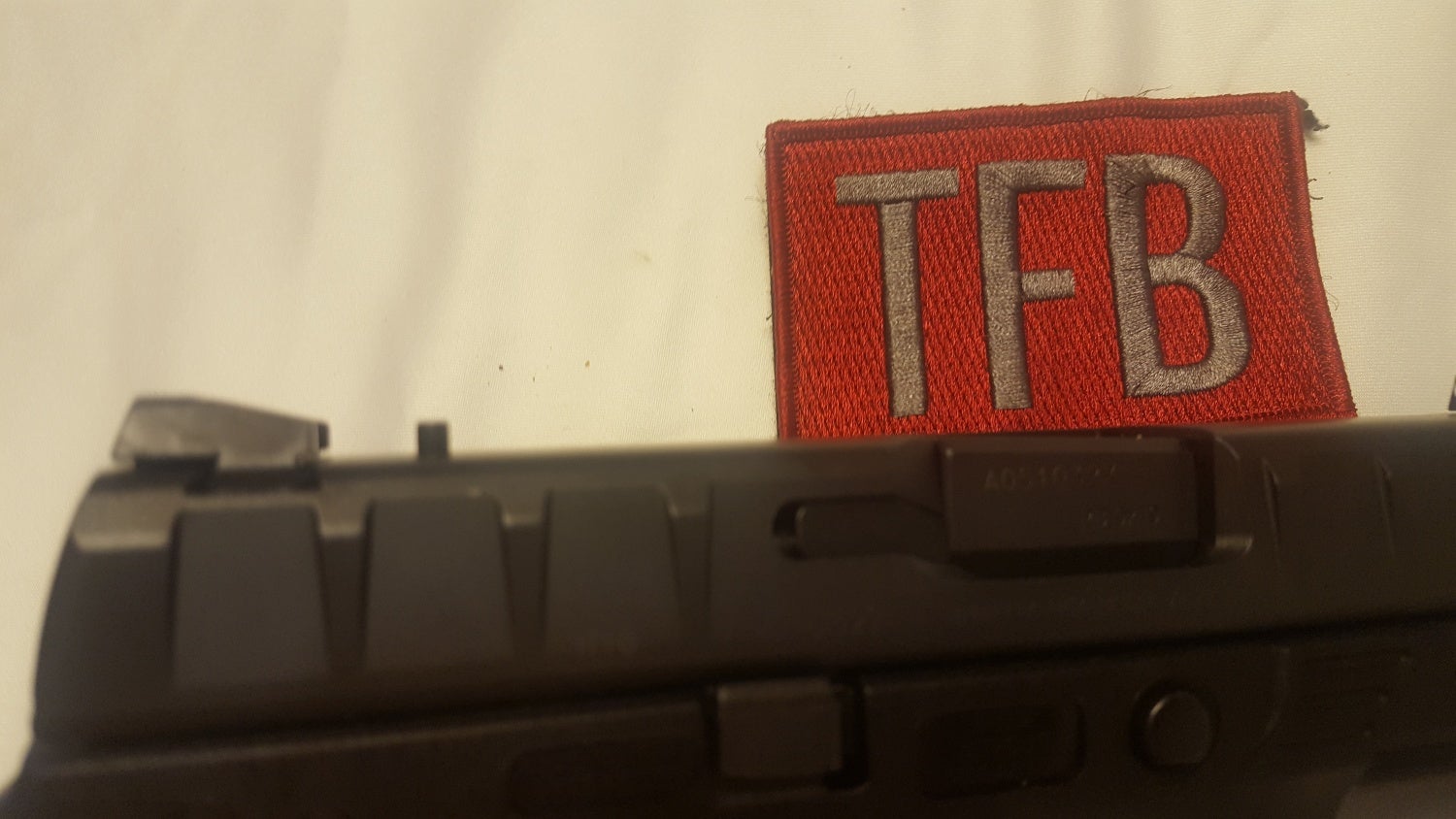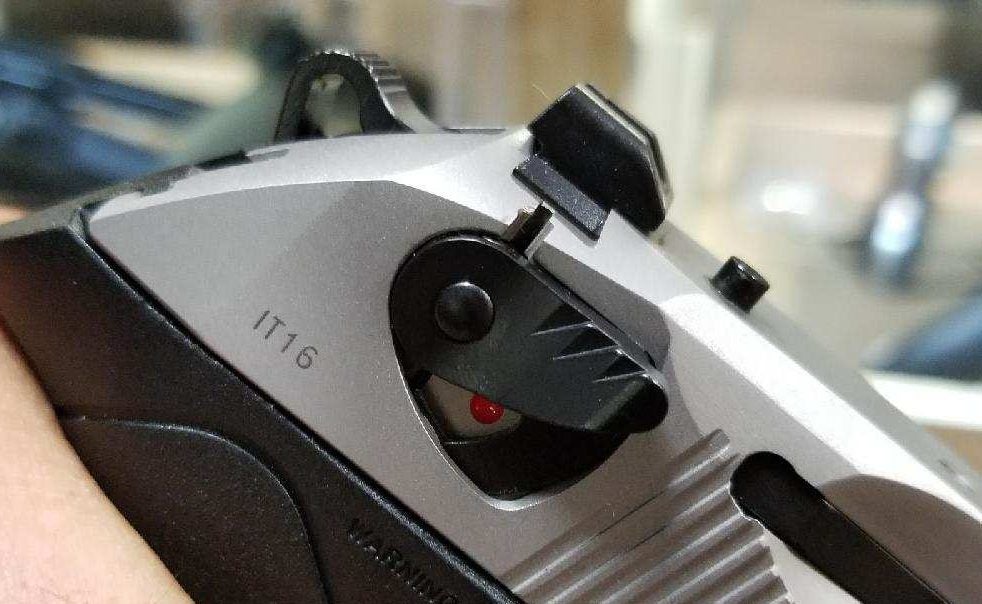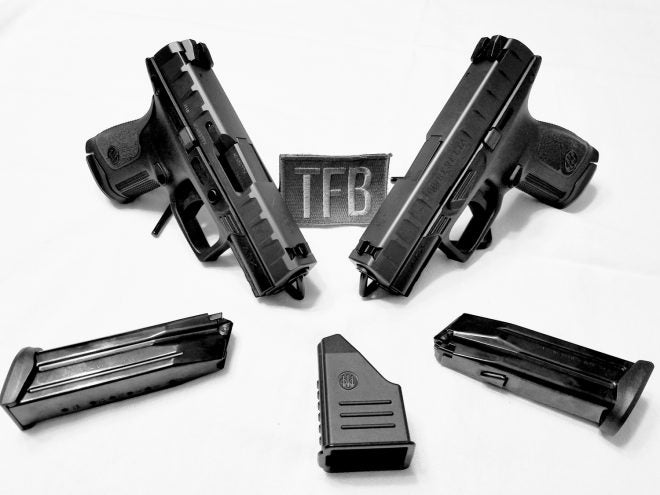We recently received Beretta’s newest additions to the APX line, the “Centurion” and the “Compact”. While they share characteristics of the original full-sized model, the Centurion and the Compact are both smaller additions to the series. The Centurion is considered mid-sized with the Compact the “smallest” in Beretta’s APX series. Both of the models we received were chambered in 9mm. We took a look at them, took them apart and fired both.
Construction and Observations
First, let’s go over the options that are common among models in the APX series. The APX offers an ambidextrous slide stop, a modular frame housing, interchangeable back straps. A reversible magazine release is a nice option of the APX. The slide has aggressive wide serrations on front and back of the slide. It would appear the APX is wisely following the trends of many of the other modular handgun systems.
Safety Features
The APX has a striker blocking device that sticks up through the top of the slide when the trigger is pressed. When the trigger is not engaged the striker is physically blocked. A number of people that I showed these guns to questioned its presence. Honestly, I had no immediate answer, and with a little research, I found that it is a common feature among Beretta models.

Part of the APX safety, actually not unusual on a Beretta…I certainly learned/relearned something

We see a similar design on the Model 92. How did I not notice this before?

Also on the PX Storm. Okay, okay, fine, they all have it.
Beyond the (almost) standard trigger safety we see on almost everything nowadays, the APX offers a striker deactivation button. This allows, go ahead and guess…..the user to deactivate the striker. This is actually kind of handy as it allows disassembly without pulling the trigger! I’m not saying that anyone has ever cooked off a round on a gun they thought was clear–just talking hypotheticals here…

The action in the normal state

With the deactivation button pressed
While I like the idea of this striker deactivation, on these brand new guns, I found it difficult (almost impossible) to depress on a charged action. I’m sure with plenty of practice and use it will loosen up, but it is something to be aware of.
Frame
At the top of the backstrap and frame is a narrowing at the full length of the handle. It definitely gives it a unique feel when firing. It may be that or the low bore axis of the design, or a combination of the two. Both have a good feel for firing. The front grip texture is very pronounced. It provides a strong positive grip on both models. Some of the women who fired the pistols found the texture uncomfortable. So did our Editor-in-Chief. He apparently runs a keyboard more than a gun these days.
Trigger
When dry firing initially I thought the trigger would be a little rough–it had that “gritty” feel to it. That all changed when I started firing it. The first thing I noticed was the trigger reset it is both positive and audible. The trigger is crisp enough to make it an excellent factory trigger.
Sights
The front sight dot is slightly larger than the rear, easily grabbing your eyes’ attention. The rear sight body sits high enough to catch on your belt and assist in racking the slide in an emergency situation (or whatever “cool guy ninja” method you ascribe to).
Slide
The slide serrations are deep and spread out. They work with both bare and gloved hands. With my large hands, it was very comfortable. At a local range, I had a number of smaller framed people handle and fire the pistols. Most liked the slide serrations, and no one complained (too much).
During my inspection, I found that both slides are identical. I swapped the slides and both passed a function test. With both pistols sharing the same slide I looked for the differences in the frame. Following my examination, the only difference I could find is a mere half-inch in grip length, besides that small difference they are identical.

About one-half inch difference in grip length. The only difference I found.
For a general idea of the APX in operation, James at TFBTV did an excellent review on the full-size APX, you can take a look at it:
Technical Specifications (i.e. What is different…)
I have highlighted the differences in red. But basically, it is the overall height (by a third of an inch), weight (by a half an ounce), and capacity (by two rounds with the larger magazine). Yep, that’s it. Even the MSRP of both is identical–$575.00.
The APX CENTURION
This midsized Centurion has an overall height of 5.19 inches, weighs 27 ounces and has 15+1 capacity.
| Action | Striker-fired |
|---|---|
| Barrel length (mm) | 94 |
| Barrel length (in) | 3.7 |
| Caliber | 9X19 |
| Magazine | 15,10 |
| Overall height (mm) | 132 |
| Overall height (in) | 5.19 |
| Overall length (mm) | 177 |
| Overall length (in) | 6.97 |
| Overall width (mm) | 33 |
| Overall width (in) | 1.30 |
| Safety | Striker deactivation button, firing pin block safety, trigger safety. |
| Sight radius (in) | 5.7 |
| Sight radius (mm) | 145 |
| Sights | Removable front and rear sights |
| Weight unloaded (g) | 765 |
| Weight unloaded (OZ) | 27 |
The APX COMPACT
The APX Compact also has an overall height of 4.8 inches, weighs in at 26.4 ounces and has a 13+1 capacity.
| Action | Striker-fired |
|---|---|
| Barrel length (mm) | 94 |
| Barrel length (in) | 3.7 |
| Caliber | 9X19 |
| Magazine | 13,10 |
| Overall height (mm) | 122 |
| Overall height (in) | 4.80 |
| Overall length (mm) | 177 |
| Overall length (in) | 6.97 |
| Overall width (mm) | 33 |
| Overall width (in) | 1.30 |
| Safety | Striker deactivation button, firing pin block safety, trigger safety. |
| Sight radius (in) | 5.7 |
| Sight radius (mm) | 145 |
| Sights | Removable front and rear sights |
| Weight unloaded (g) | 750 |
| Weight unloaded (OZ) | 26.4 |
Conclusion
I like The APX. Everyone I let fire it seemed to like it as well. I put approximately 400 rounds through these APX’s. I fired both slow and steady, and also performed a few magazines dumps. Both pistols were comfortably fired using my off-hand. These guns were just comfortable and smooth. Although the front grip serrations might be too much for some, I appreciated them. I found both to be easily controllable with a good trigger right from the factory. I do not think you will be disappointed in either of them.
My biggest issues is that I just did not find the Compact,…..very compact. I feel that Beretta should have done a little more. I know that costs money, but they could do more to shave size and weight. The length of both models is identical. The upper half of the gun, barrel, trigger, and slide are all exactly the same. I really felt that it was more of a minorly compact Centurion then the third in the APX line.
I like what I have experienced in the APX line and I wouldn’t mind adding a Centurion to my collection–I will suffer through that six-tenths of an ounce (and keep the 2 more rounds).
You can find more information on Beretta’s website:
- Compact: http://www.beretta.com/en-us/apx-compact/
- Centurion: http://www.beretta.com/en-us/apx-centurion/
You can find Beretta APXs at Brownells.
We are committed to finding, researching, and recommending the best products. We earn commissions from purchases you make using the retail links in our product reviews. Learn more about how this works. Your Privacy Choices
Your Privacy Choices
